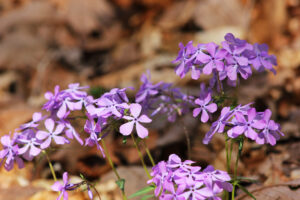By Bernheim
 Take a moment during your busy day to picture your ideal scene at Bernheim Arboretum and Research Forest. Are you deep in the quiet of a woodland, or strolling through the open air of a high prairie? Is the warm sun casting shadows of tall trees, or is there a fresh layer of snow blanketing the trails? Have you found an isolated, contemplative refuge, or do you chat with friends near the Olmsted Ponds?
Take a moment during your busy day to picture your ideal scene at Bernheim Arboretum and Research Forest. Are you deep in the quiet of a woodland, or strolling through the open air of a high prairie? Is the warm sun casting shadows of tall trees, or is there a fresh layer of snow blanketing the trails? Have you found an isolated, contemplative refuge, or do you chat with friends near the Olmsted Ponds?
Some visitors picture waves of native warm season grasses rolling along the Big Prairie, broiling in the summer breeze. Others see the furrowed bark of chestnut oaks standing proudly atop a sandy knob, presiding over Bernheim Forest. Yet another might envision a babbling stream, lined with tulip poplars and beech trees, meandering through deep cut ravines that skirt the high ridges. Many visitors, of course, see Mama Loumari, Little Nis, and Little Elina, the Forest Giants that call Bernheim home.
Most visitors of Bernheim have recollections of beauty, diversity, and resiliency when they picture the arboretum and forest. They come here to experience a deeper connection with nature, and often do so in the most pristine areas located within Bernheim. What is sometimes overlooked, however, are the areas in which Bernheim staff work so diligently to restore to healthy wildlife habitat.
Over the past three years Bernheim has partnered with the Natural Resource Conservation Service and the Kentucky Department of Fish and Wildlife Resources in a program called Environmental Quality Incentives Program, or EQIP. EQIP is a cost sharing program that assists property owners in improving wildlife habitat on their property. Bernheim Natural Areas staff recently completed the initial phase of an EQIP project by removing invasive shrubs from nearly 30 acres of woodlands within Bernheim Arboretum.
Invasive shrubs like bush honeysuckle, autumn olive, and privet have immediate and long lasting impacts on an ecosystem. These aggressive shrubs reduce the populations of native wildflowers and ground cover species, out-compete native shrubs, reduce native canopy tree regeneration, and even negatively impact soil chemistry. These impacts ripple throughout the habitat and can leave forests and the wildlife that use them vulnerable to threats.
Over the coming seasons, guests that visit these woodlands will be able to see firsthand the impact of invasive shrub removal. With increased sunlight, the seedbank stored within the forest floor will be released, allowing wildflowers to once again germinate and bloom in spring and summer. Native shrubs such as spicebush and coral berry will have space to occupy the shrub layer once again. Oaks, hickories, beeches, and poplars will reach for the sun and grow tall. The insects, birds, and mammals that rely on these native plant populations will once again have habitat and food sources to thrive upon.
The forest will see immediate results from this removal, but the management prescribed through the EQIP project will carry on. Follow up treatments will be done over the coming growing seasons to make sure that the invasive shrub layer remains eradicated, ensuring that the native species will have continued success.
A major component of Bernheim’s vision is to be a nationally treasured leader in ecological stewardship. Programs such as EQIP help to make that vision a reality. Restoring degraded woodland to thriving, resilient, and diverse wildlife habitat moves Bernheim closer to that vision. It builds upon existing protections of our large, intact forest blocks, stream headwaters, diverse habitats, and rare animal species.
To get involved with restoration efforts at Bernheim Arboretum and Research Forest, click here to learn more about volunteer opportunities.


